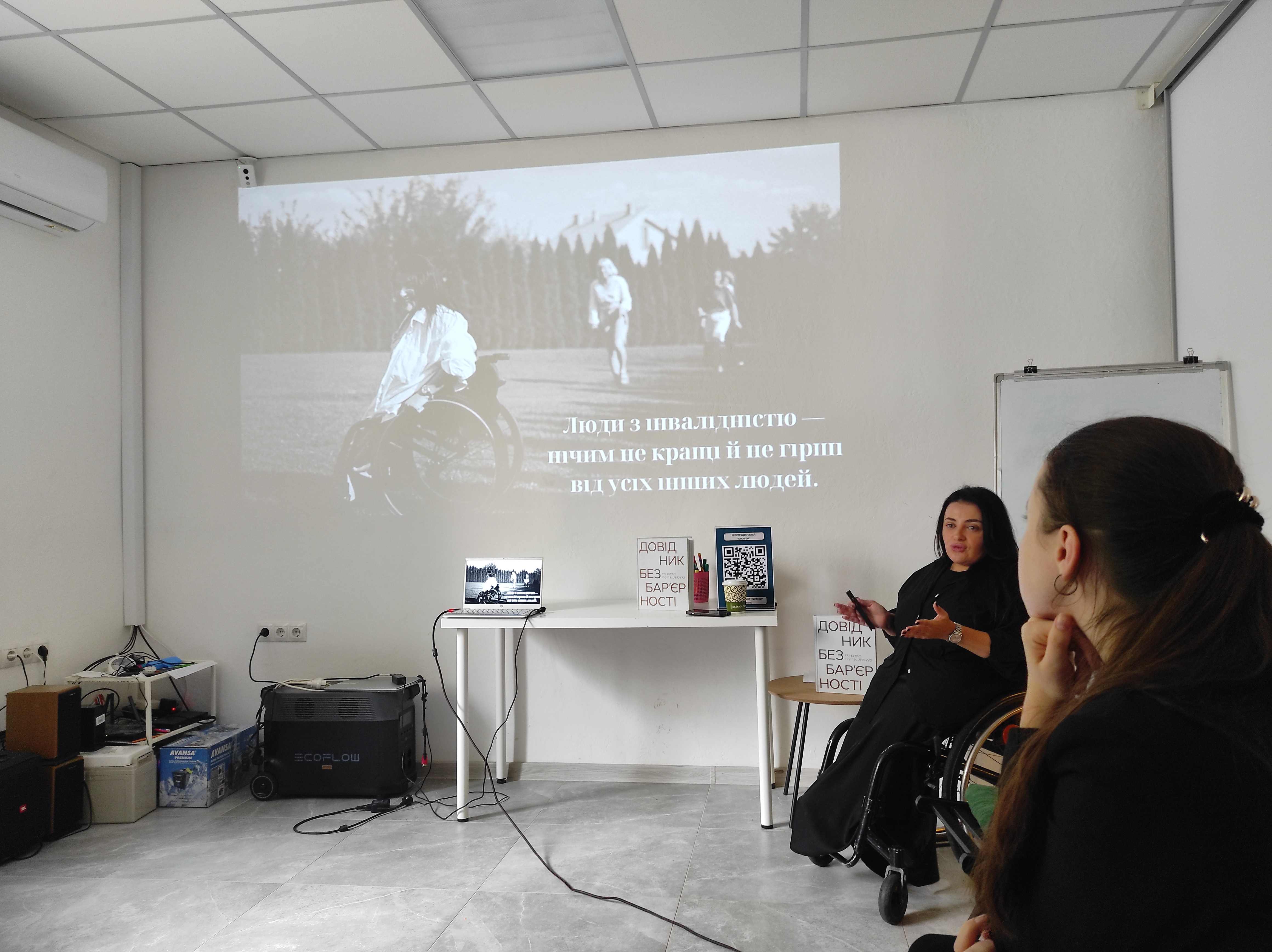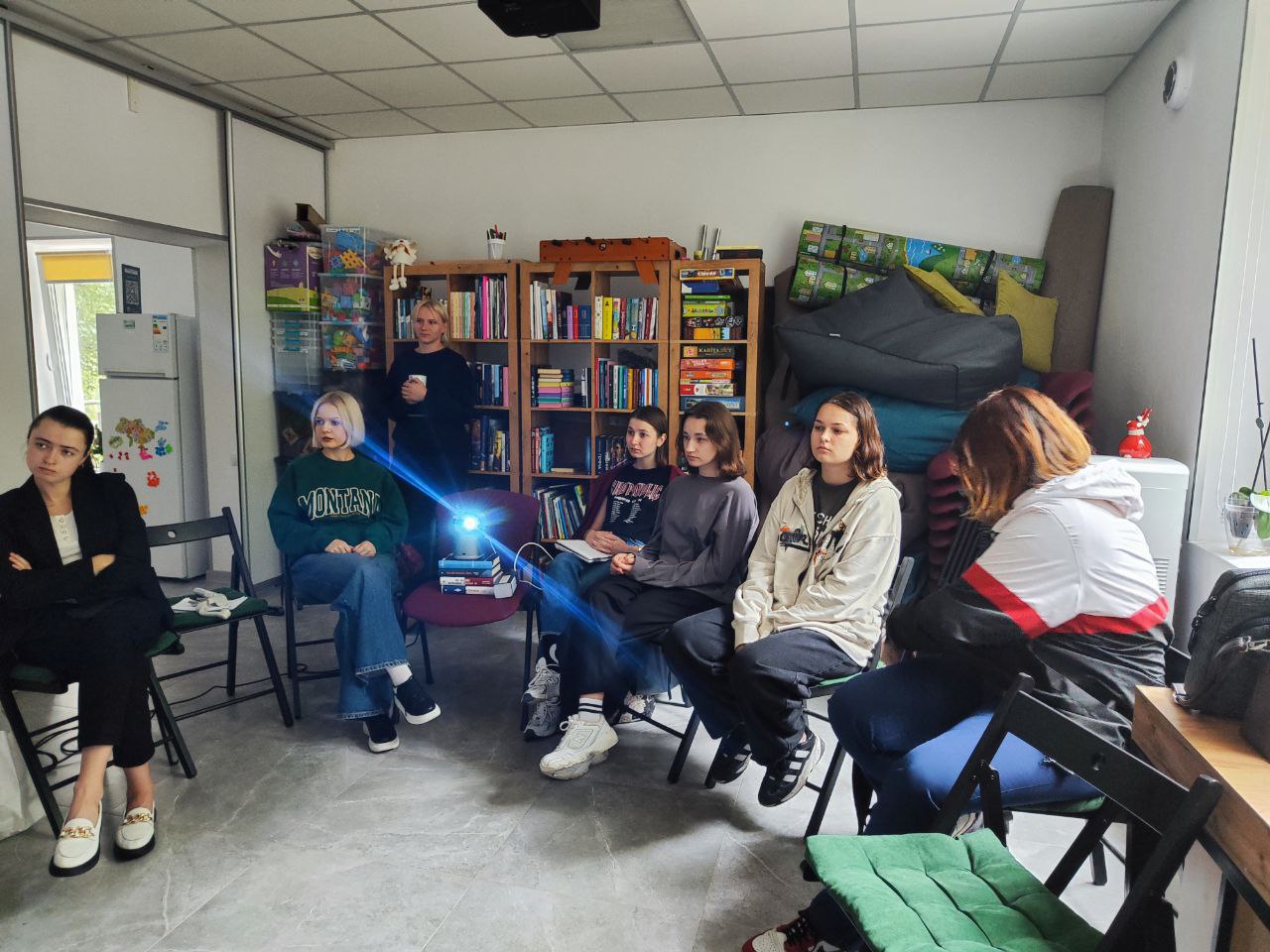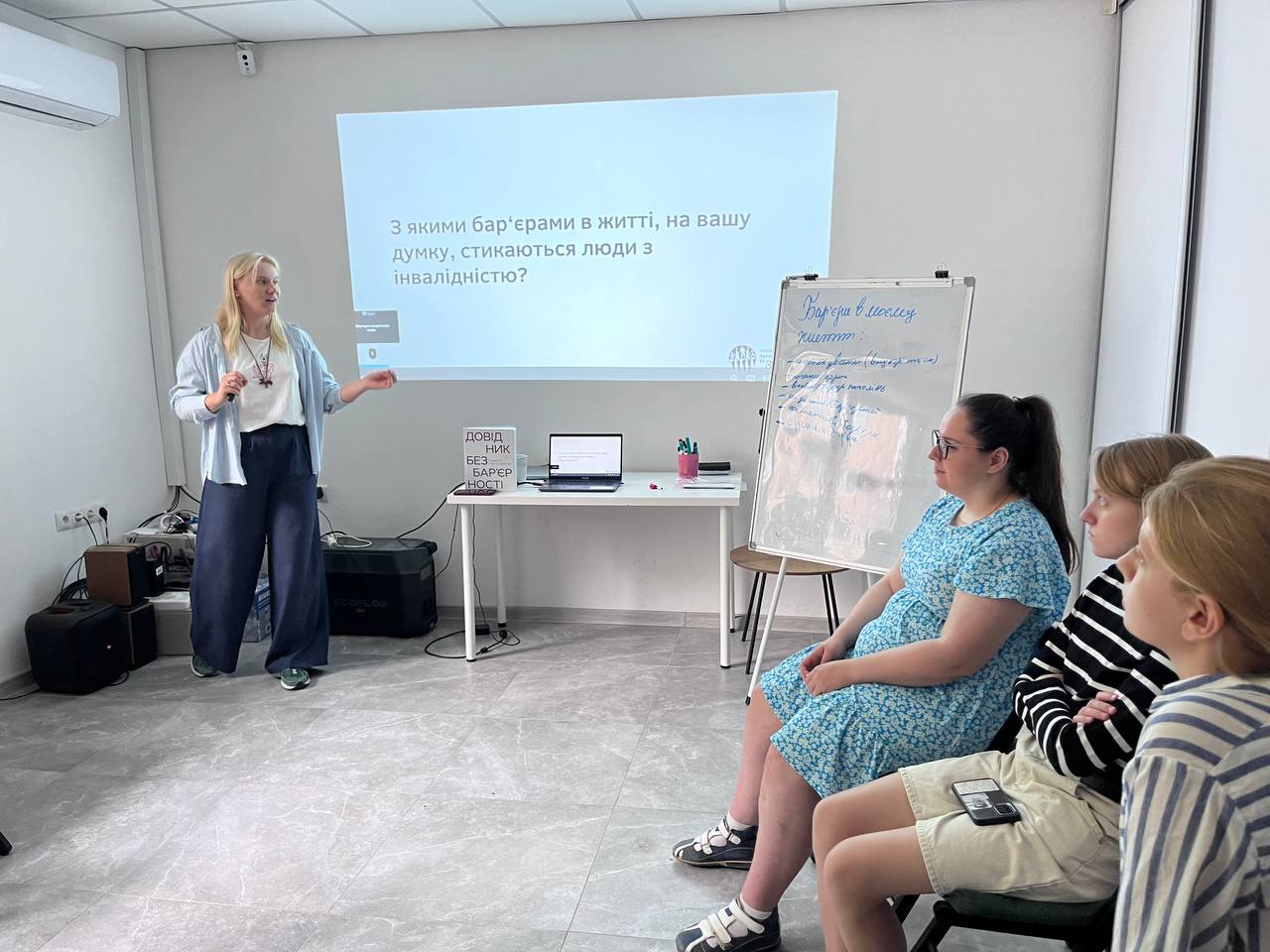Barrier-free communication and inclusivity coaches Maria Nikitina and Liliya Ivoniak shared the rules for effective and barrier-free communication with people with disabilities during their training class “Barrier-free communication in the media”, which was organized by the IMI’s regiona hub “Mediabaza Chernivtsi”.
The trainers noted that journalists not just write about people with disabilities, but also talk with them. Both the former and the latter must be done properly, and there are some rules one should follow for this.

Barrier-free communication and inclusivity coach Maria Nikitina gives a training class at the Mediabaza. Photo by Mediabaza Chernivtsi
Here are the rules for effective and barrier-free communication with a person with disabled person:
- Address the person directly. The journalist should be addressing the person who is going to be featured in their article, and not the escort whose services this person is using (e.g. to help with their visual impairment).
- Articulate more clearly. Do not speak louder, but pronounce the words more clearly.
- Do not hide your face, do not turn away.
- Do not interrupt, wait until the person concludes their thought.
- Do not be afraid to ask follow-up questions.
- Speak in a normal tone, not a patronizing one.
- The words you use should not reinforce stereotypes.
- If you are working on a group video or photo, it is important that the person with a disability is featured on par with everyone else.

Attendees of the Mediabaza training class on barrier-free communication in the media. Photo by Mediabaza Chernivtsi
Coach Maria Nikitina, who uses a wheelchair, spoke about her experience talking with the media.
“They also wrote about me in a magazine. There was a photo of me applying lipstick. They wrote, ‘Maria Nikitina paints her lips even though she can not find employment.’ And I was working two jobs at the time,” says the coach.
Maria Nikitina notes that the media may manipulate the topic of disability to make their reporting more emotional. For example, journalists may embellish the story with made-up details (e.g., “despite their disability, this person not only has a proactive worldview and a job, but also helps their mother tend the garden”).

Barrier-free communication and inclusivity coach Liliya Ivoniak gives a training class at the Mediabaza. Photo by Mediabaza Chernivtsi
In addition to manipulation, the media may use incorrect terminology, says Liliya Ivoniak. For instance, they may use the following phrases:
- “deaf and dumb” instead of “person with a hearing impairment”;
- “people with special needs” instead of “people with disabilities”;
- “retirement-aged people” instead of “elderly people”.
The coaches recommend that journalists refer to the “Barrier-free Accessibility Handbook” to check whether a particular term has been used correctly.
Mediabaza Chernivtsi communications manager Anna Sotska
